In dialogue with works by painter and artist Archibald Apori
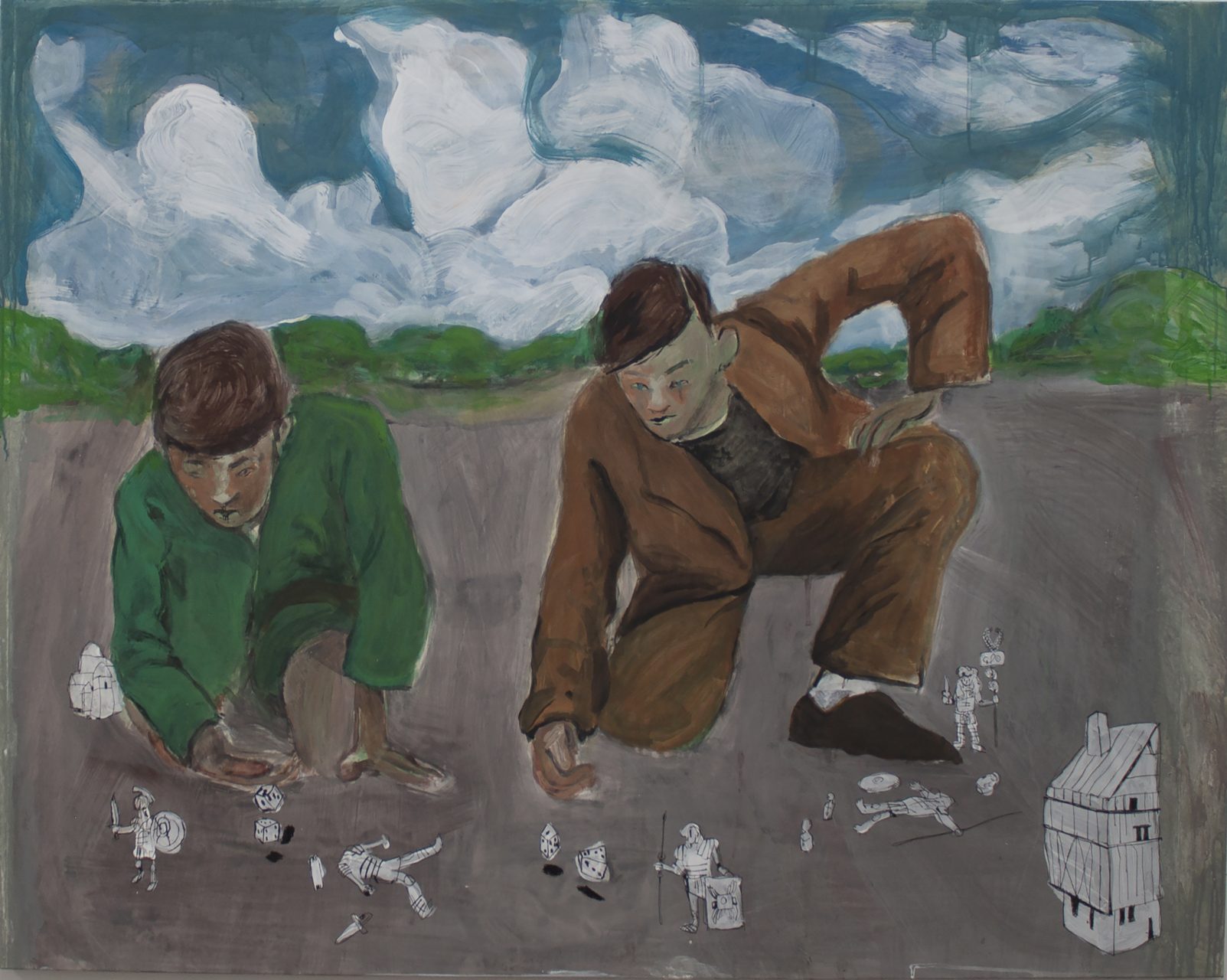
oil painting on paper on canvas 146x114cm
The Small Rustic Cabin
Antoine Vidler in his monography of the architecture of the Enlightenment period showed in the chapter, “Autonomous Architecture – The Primitive Cabin” that the idealized vision of the small rustic cabin has a long epistemological history. The expression “state of origin” is a widely used metaphor in the 18th Century and intellectual construction of this period. For philosophers in that period, the idea of origin didn’t indicate a historical or anthropological, but only a logical analysis, a way to treat the progress of knowledge, as Vidler argues. The conception of the rustic cabin introduces a positive character in the trial at the beginning. “Vitruvius’s Rustic Cabin[i]” serves to theorize architectural in the thought of Marc-Antoine Laugier, in an exegesis of architecture in the Enlightenment Period. The hut hidden in forest in an 18th Century interpretation, during the age of colonization, is the realization of the man who remakes his life and his fortunes elsewhere. Anthony Vidler establishes a parallel between the figure of Robinson and that of Lafitau. Robinson’s adventures occur in the same year as Lafitau arrives in Canada. Daniel Defoe presents the practical aspects of a voyage of exploration undertaken by missionaries, already underway for a century, in a period marked by peasant migrations and the exploration of other continents. It’s the celebration of a European know-how, proof that the European man can remake his life in exile. The 18th Century man knew how to conquer the new world, reach new horizons, and establish a new economy amidst new surroundings in a temporary transition. The image of the rustic cabin, the myth of the “primitive cabin” is extremely present in the political and social writings from the period, forming part of their basic vocabulary. Vidler applies the differences in interpretation in Rousseau’s cabin and Robinson’s and finds in colonization the origins of nomadic modernism[ii].
In 1762, when Rousseau looked for the book that could give the young Émile an idea of the solitary state of man and nature and to become a touchstone for all others, he chose Robinson. “We can imagine that, like Robinson, Émile fearfully explores his territory, trying for the first time to eat his bread […] construct his lodgings. Pushed to its logical conclusion – in a turn that would have doubtless displeased Rousseau, Émile’s experiences would have made him, like Robinson a capitalist-colonialist and a rich man[iii]”. But Rousseau’s student doesn’t become a capitalist-colonialist because he didn’t achieve “success” as defined by the period. It’s precisely in 1750, and the beginning of his philosophical career that Rousseau founds his critical thesis on society and modernity on the state of cabins. The Discourse on Science and Arts clarifies:
We cannot reflect on the customs that we would like to remember in a picture of simplicity at the beginning of time. When men were innocent and virtuous and loved to have God as witness for their actions, they lived together in the same cabins, but the gods soon became wicked […] leading to the depth of depravation, and vices were never pushed further as when gods stood before palace entrances, atop marble colonnades and engraved on the capitals of Corinthian columns[iv].
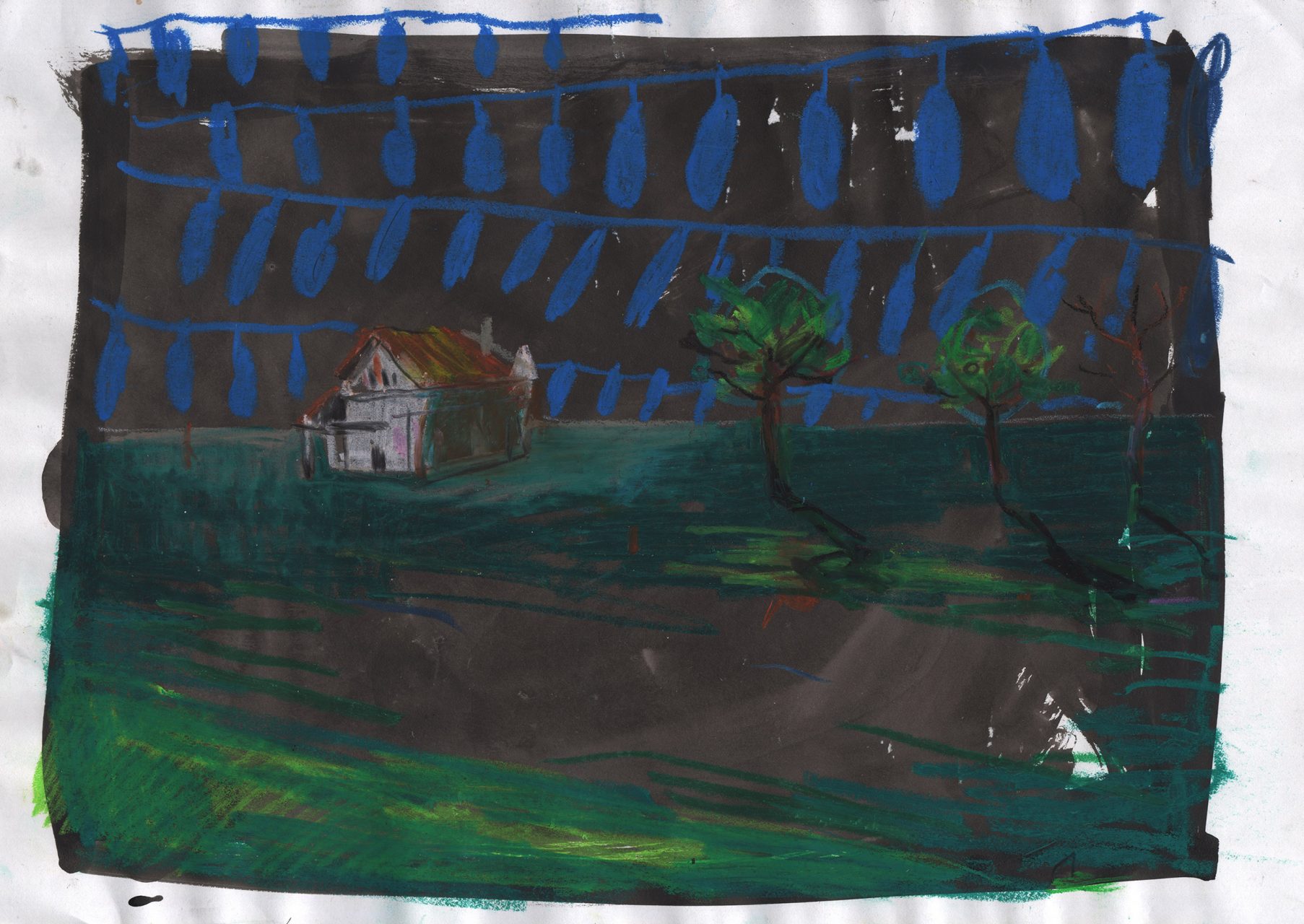
The small rustic cabin in Rousseau’s work is not the symbol of a new beginning; it is rather criticism of this fable, a rhetorical tool in his Discourse on the Arts and Sciences to attack the evolution of architecture and institutional progress. And yet, the Discourse on the Origin and Basis of Inequality Among Men [second Discourse] in 1754 lauds the era of cabins when “we will get used to gathering around cabins or around a great tree[v] […] While men are content with their rustic cabins[vi]”. The Essay on the Origin of Languages also evokes “this happy age when nothing will mark the time[vii]”. Of course, this is the Golden Age where nothing prevented man from living according to his true nature. This hypothetical period of a state of nature ends with a universal change in housing. As long as men “are content with their rustic cabins”, they live “free, healthy, good and happy as much as they can be by nature[viii]. The instant they discover they can accumulate possessions or riches, slavery, and misery see the light of day.” The gentle landscape of agriculture is now “marred by the sister of unhappy work” and the “walls of cities are only made from the debris of the house in the fields[ix]”.
However, the state of nature is now threatened on two flanks: on one side savagery and on the other the progress of civilization. The era of cabins marks a cesura. The desire for stability is translated by self-sufficiency, a state of equilibrium where everything is subject to an idealized utilitarian economy. This approach also characterizes Discourse on Political Economy where Rousseau concretely lays out his ideal of a natural economy dominated by agriculture. In his contemporary society, it’s only in isolated rural pockets of Switzerland that Rousseau could find an echo of these ancient cabins built by the owner’s own hands. The cabin in the woods of Swiss peasants is presented in Letter to M. D’Alembert, as the space of simple and happy life[x]. The cabin designates the perfect use and the protective distance with its environment, the possibility of perfect isolation, in a distance that is both nurturing and threatening. The “small cabin” is not only the symbol of simplicity and the possibility of a new start outside of society, it is also the pictorial and iconographic representation par excellence of detachment from it.
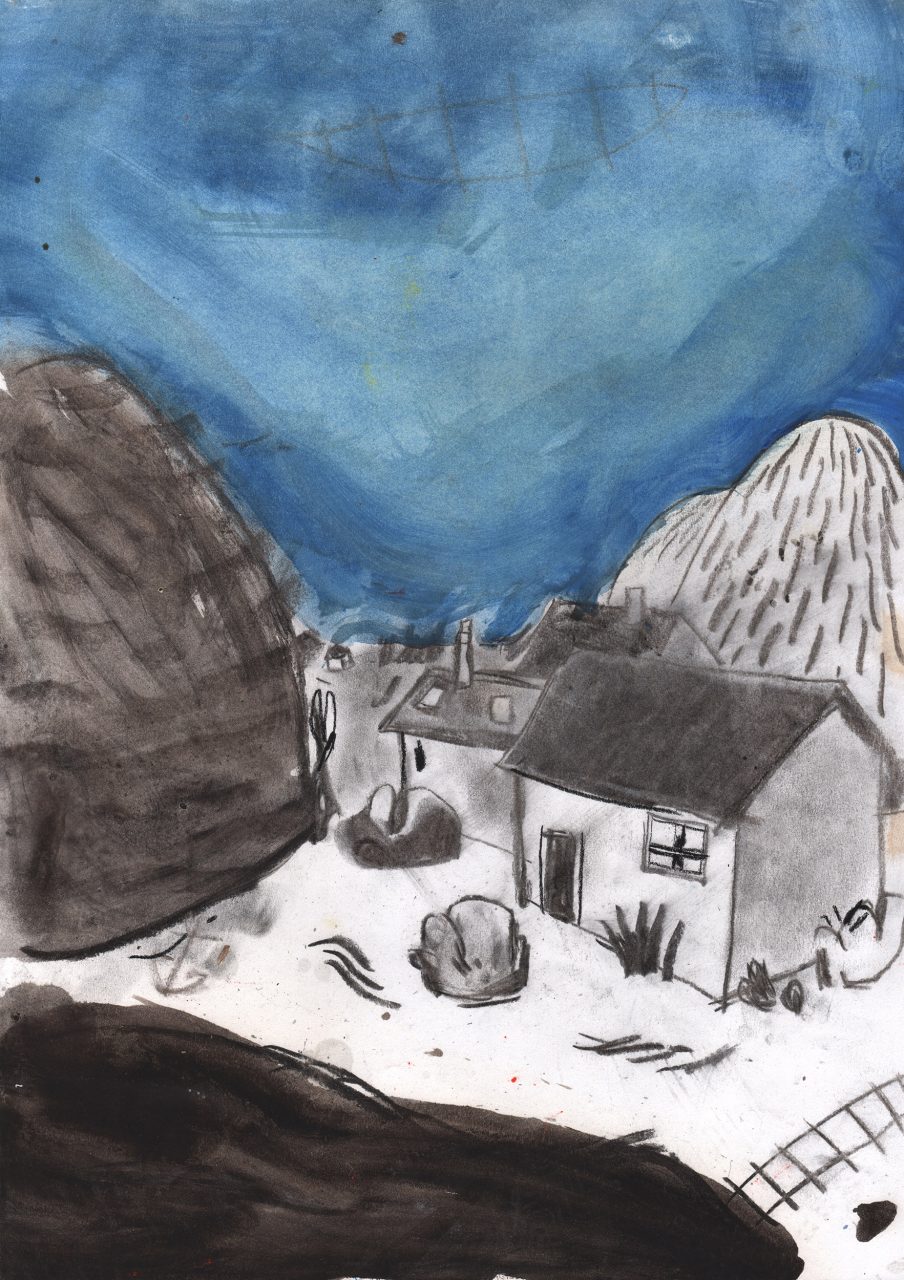
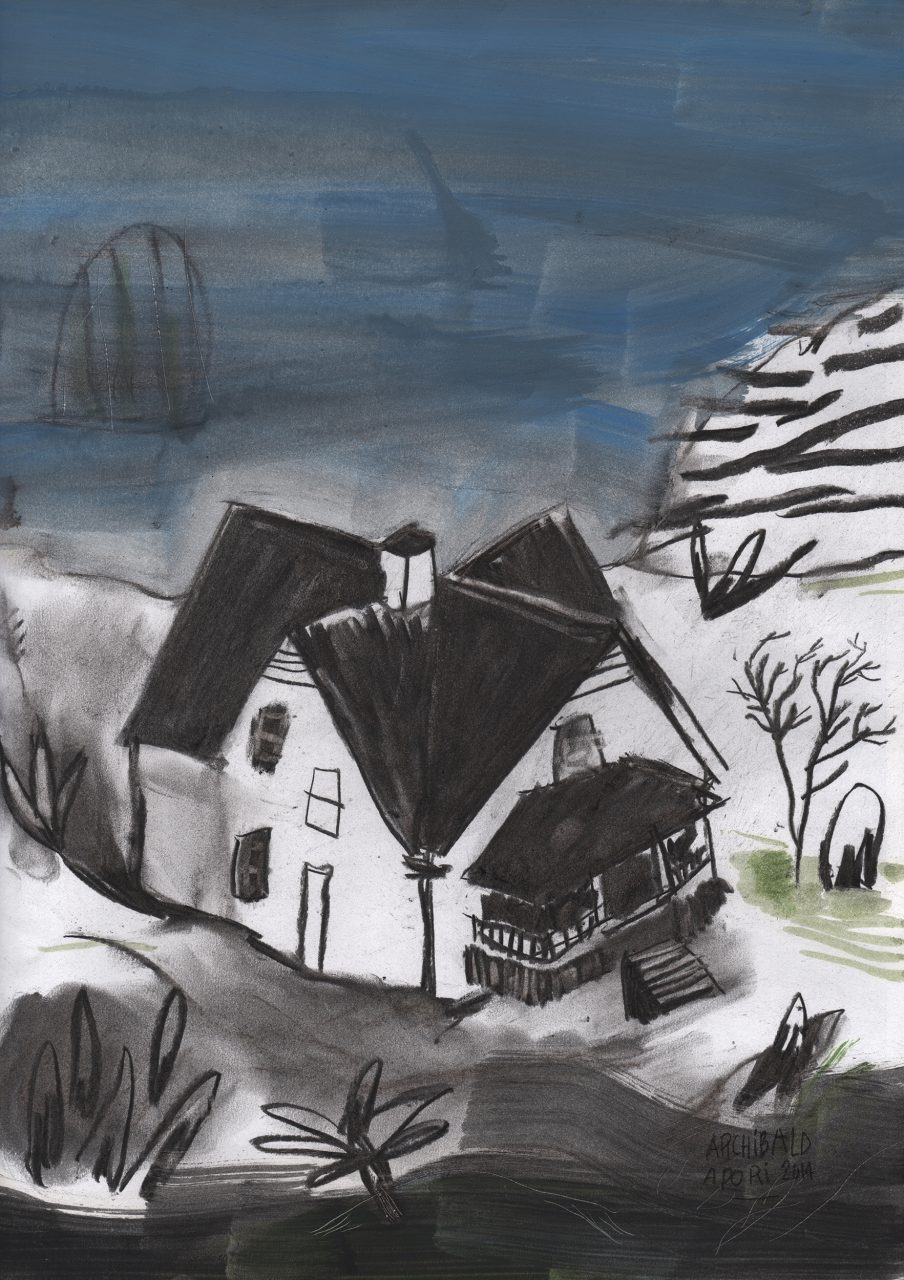
The Chalet
There exists another strategy of living, closer to that of the cabin, which offers the possibility to live an isolated and detached: the chalet. If the image of the cabin expresses an economic autarky, the chalet carries a much starker emotional dimension. The first appearance of the chalet in a letter to Julie is eloquent.
Surrounding the principal building, which Mr. d’Orbe makes use of, are scattered further on, several chalets, with which their thatch roofs can cover love and pleasure, friends of rustic simplicity […] The brooks that traverse the prairies are bordered by shrubs and delicious small woods. Thick Woods offer further on more deserted and dark refuges[xi].
Property and pleasure-grounds, this time, it is linked to the idea of the country home. The chalet, which originally referred to the Vitruvian conception, by the intermediary of Laugier, becomes a symbol of the individual edifice. Viollet-le-Duc fittingly finds that in Julie’s chalet is the exemplary example of a modernist individualism[xii]. He even suggests that the Swiss chalet is the protype of the Norwegian peasant home, Nordic cabins. The architectural myth of the chalet is also a political myth, which becomes an omnipresent image until the 19th Century. The chalet is not only the autonomous building that represents autarky, but it is perfectly adapted to its environment. Moreover, the chalet is the exemplary space of reverie. When Rousseau chooses the image of the chalet for the first time in Julie, he adds an explicative note to designate this kind of habitation: “A kind of wooden house were various kinds of cheeses and milks are made in the mountains[xiii].” He uses a word that has no relation whatsoever to the idea of habitat. In the context of the love story between Julie and Saint-Preux, the chalet is the promise of happiness. It becomes the preferred image of Rousseau as landscape gardener, a cherished drawing he never ceases to add to. In Julie or, The New Heloise, the chalet represents the space of a life that is worth living. Secret and intimate rendezvous, the chalet is the center of the lovers’ universe:
And so my friend, always the chalet? The history of this chalet weighs furiously on the heart, and I see very well that until death or until life, that the chalet must be right! But these places where you never were, are they so dear to you that you can’t compensate for them elsewhere, love that makes Armida’s palace in the middle of the desert, wouldn’t it make a chalet in the city[xiv]?
In Letter to Julie, there’s a reference to Montesquieu and his temple of Gnidos: “this chalet consecrated by love, will be for them the temple of Gnidos[xv]”. The chalet is the metaphor of the “perfect” island, the symbol of a happy intimacy, the existence of an alternative society, a fiction detached from the world. This theory is supported late Rousseau in his Reveries of a Solitary Walker. This time, Rousseau examines the barrier between lying and fiction and establishes definition of the “positive lie”.
If there is for example a moral purpose in the Temple of Gnidos, it is well hidden and spoiled by voluptuous details and lascivious images. What would have made the author cover that with a varnish of modesty? He pretended his work was a translation of a Greek manuscript and invented a story of the discovery of the manuscript in a manner best suited to convince his readers of the truth of his tale. What is this if not a positive lie[xvi].
A very positive lie, the painting idealizes the little hut and still expresses a simple life on the banks and becomes the symbol of natural and rustic customs, as opposed to the sumptuous and ornamental architecture of temples and palaces, “signs of luxury and decadence”. The isolated cabin, the hermitage, the chalet is not simply a political and esthetic category, but also an economic one. The inhabited earth, the house “oikos”, must represent the ecumene that resides in the ecological use of isolation. If this geographical, temporal, and social distance is adapted in an ecological manner, it ensures the criteria for self-government. The barrier that separates and describes the distance inside and outside has a primordial importance in this configuration. However, the topography of the island in Rousseau’s imagination possesses another dimension, less positive. If it is the sign of break, a place of rupture that designated a detachment from the social body, it also expresses a dread of emptiness that becomes apparent through this gap. On one hand, isolation is desired and wanted, but in a paradoxical manner, it results in an exclusion imposed by society itself. It seems to be from this point of view to be a scar in the continuity of social relations, a cadaver-like way of living. Late Rousseau, in his Dialogues, expresses this unhealthy detachment in various fashions:
They made it so, free in appearance in the midst of men, he had no real society, he lived alone among the crowd, he wasn’t sure of anything he did, nothing of what was said around him, and above all nothing that interested him and concerned him the most, that he felt everywhere weighted down by chains that he could neither show, nor see the least vestige od. They built impenetrable walls of darkness around him cutting off his vision; they buried him alive among the living[xvii].
A few lines later, this macabre isolation is explicitly expressed:
We knew that as a foreigner he was alone and without support, his parents without help, and that he was part of no group, and that his savage humour had the tendency itself to isolate him; we did nothing in particular to isolate him, but it followed its natural course, and made everything take part in it, and from then on everything was easy. [xviii]
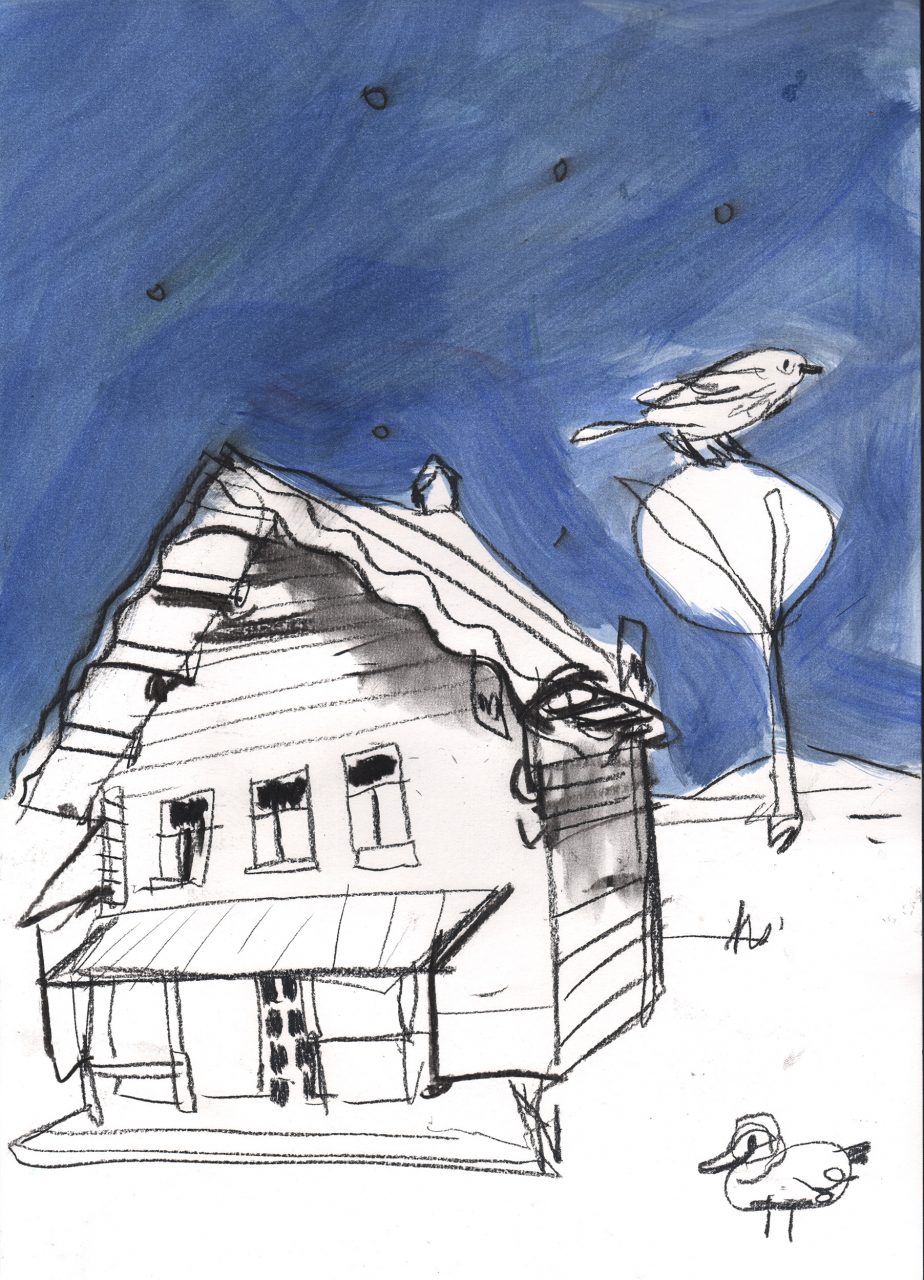
L’isola bella
The topographic situations of islands become significant when they can express at the same time several advantages of social, political, or esthetic distances. The surroundings, the interval around an island, the existence of a reassuring but fragile enclave. This interval (the fluid nature in the case of the island St. Pierre, see the Fifth Walk of the solitary walker) prescribes a contour of detachment and dresses up uncurbable and permanent character. Excluded from social space, the author takes refuge in various solitary spaces. These places have different names but keep the same functions: to maintain the temporal or geographic distance, to reinforce the rampart of the interval. Thiébaut-de-Berneaud, the author of Voyage to Ermenoville describes the changes of “Les Charmettes” into a “Hermitage”:
This delicious retreat was at first isolated from all habitation. Placed on the side, it seems to have lost the massive greenery that separated it from the village. The rooms of the Hermitage are small and simple. Rousseau came to live there on April 9th, 1758, having returned to his dear Charmettes[xix].
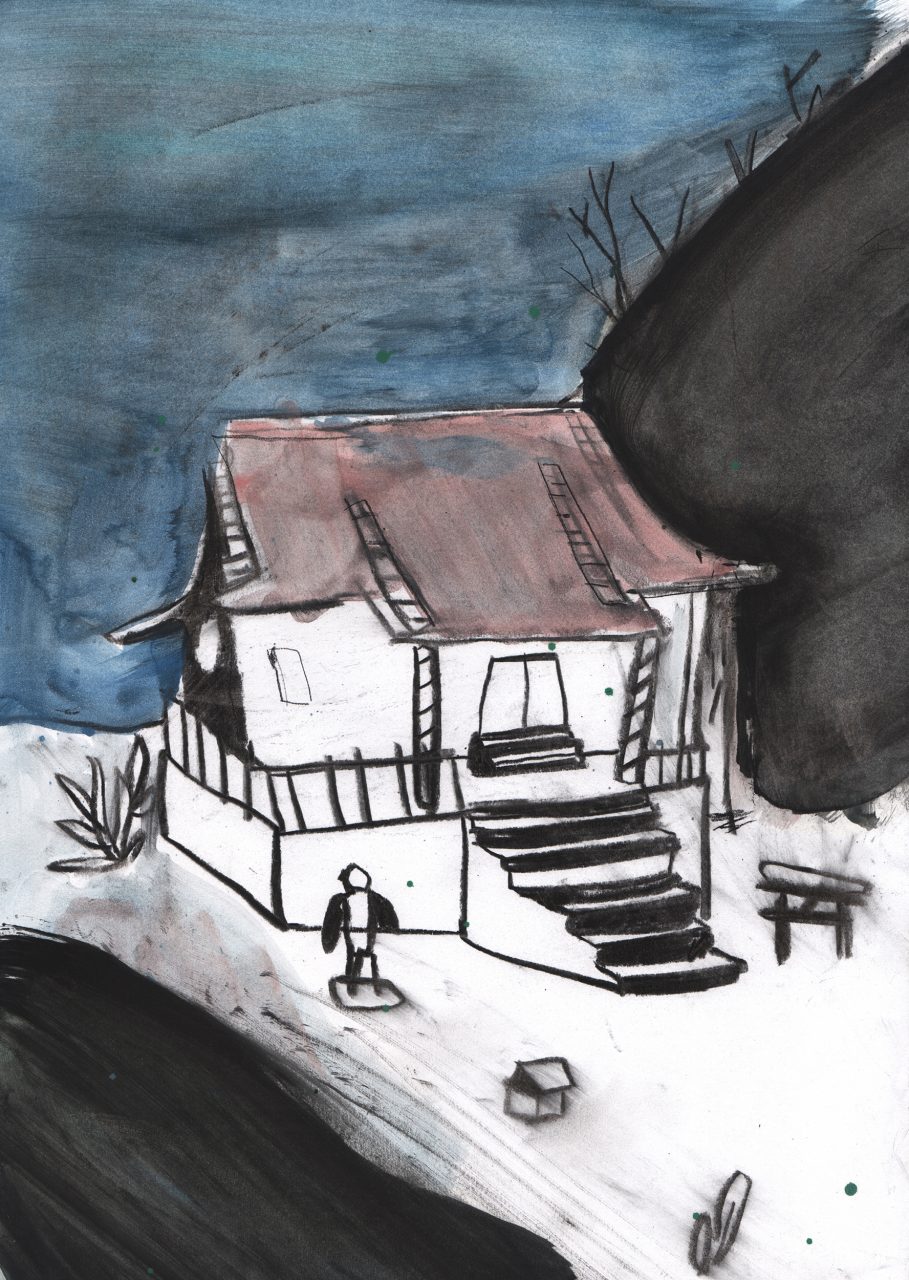

A more recent description of the adolescent home: “Les Charmettes is not only the name of the place, but it is a hamlet with its own name. This name dates back to the Middle Age, and comes not from charm, but from the name of trees. The hornbeams [charme in French[xx]], must have abundantly grown there, the forest before the idyll[xxi].” So many beautiful islands along Rousseau’s path: « solitary and very agreeable place […] called The Hermitage[xxii]” in the far Western part of Montmorency, where he composed his major philosophical works, and then the island, Saint-Pierre, of the Fifth Walk, and finally the enteral calm of the Poplar Island in Ermenoville. Not only did Rousseau flee to these islets, but he chose the physical condition of isolation against all other opportunities.
When speaking about islets, the question of enclosures and boarders is naturally raised: how to circumscribe, how to go around? From an aesthetic point of view, it’s necessary to refer to the illustrations to the letters in Julie: in order to understand the strong desire to hide the overly apparent margins visible in the fields, the littoral is presented as an optical illusion. The famous “ ah-ha[xxiii]” is a successful camouflage method. The depth of the field becomes more flexible if there is no visual obstacle marking the extremities of the view of nature: paths can also flee towards the immensity of the horizon. An “Isola Bella” on the horizon, as we can read on this page of the Confessions:
When we look at this building from an opposite height it gives it perspective, it appears absolutely surrounded by water, and we believe we see an enchanted island, Isola bella, in the Lake Maggiore […] I composed in a continual ecstasy the fifth book in Émile, which I in large part painted very spontaneously the lively impressions of the place where I was when I wrote[xxiv].
If the confines of territory or the field are softened and naturally soft, the fluid material can ensure a malleability and flexibility. The isolation exists but it is less cutting. I find it very strange that Walter Benjamin uses the same metaphor expressing the nominal malleability of memory in his Berlin Childhood. He speaks notably in a surprising manner when he remembers the name J.-J. Rousseau:
I haven’t gone to the Rousseau Island in years, and for this reason, his name has stayed with me like I had been myself an island, cut from all exchanges with the earth that closes my thoughts. If I am able today to understand this, it’s because a light has recently fallen on a group of islands of this kind – sterile and uninhabited reefs, recumbent in the sea of memory, like the night from the lights of customs patrol boats searching the reefs near Gandria[xxv].
Footnotes
[i] Marc-Antoine Laugier, Essai sur l’architecture, Bruxelles, 1979, pg. 9-10.
[ii] Antoine Vidler, L’espace des Lumières, Paris, Picard, 1995, p. 28.
[iii] Ibid., p. 31.
[iv] J.-J. Rousseau, Discours sur les sciences et les arts, OC, t. III, Paris, Gallimard, 1964, pg. 22.
[v] J.-J. Rousseau, Discours sur l’origine de l’inégalité parmi les hommes, OC, t. III, Paris, Gallimard, 1964, p. 169.
[vi] Ibid., p. 171.
[vii] J.-J. Rousseau, Essai sur l’origine des langues, OC, t. V, Paris, Gallimard, 1995, pg. 406.
[viii] Idem.
[ix] J.-J. Rousseau, Du contrat social, OC, t. III, pg. 427.
[x] Frédéric Eigeldinger, Rousseau et l’architecture, in Jean-Jacques Rousseau et les arts visuels, Actes du Colloque de Neuchâtel, Faculté des lettres et sciences humaines, Association Jean-Jacques Rousseau, 20-22 septembre 2001, pg. 90.
[xi]J.-J. Rousseau, La Nouvelle Héloïse, OC, t. II, Paris, Gallimard, 1984, pg. 112.
[xii] Georges Teyssot, A topology of everyday constellations, Cambridge, MIT, 2013, pg. 35.
[xiii] La Nouvelle Héloïse, op. cit., pg. 112.
[xiv] Ibid.,p. 127.
[xv] Ibid., p. 113.
[xvi] J.-J. Rousseau, Les rêveries du promeneur solitaire, OC, t. I, Paris, Gallimard, 1986, pg. 1029-1030.
[xvii] J.-J. Rousseau, Rousseau juge de Jean-Jacques. Dialogues, OC, t. I, Paris, Gallimard, 1986, pg. 706.
[xviii] Ibid., p. 709.
[xix] Arsenne Thiébaut-de-Berneaud, Voyage à Ermenonville, Hachette, 2017, pg. 102.
[xx] Translator’s note.
[xxi] Claude Habib, Rousseau aux Charmettes, Paris, Fallois, 2012, pg. 46.
[xxii] J.-J. Rousseau, Les Confessions, OC, t. I, Paris, Gallimard, 1986, pg. 396.
[xxiii] “Gates are very necessary ornamentations in lines of allées to prolong the view and discover the rest of the countryside. We are just now making open-work fences called ah-ah (sic), that are openings in walls without gates and on the level of allées, with a large deep hole at their base, covered on both sides to support the earthwork and prevent climbing over. This surprises the view upon approach and makes one cry out, ah-ah, from which these constructions take their name. These kinds of openings block the view less than bars and gates.”Dézallier d’Argenville, Théorie et pratique du jardinage, La Haye, 1711, pg. 73-74.
[xxiv] Les Confessions, op. cit., pg. 521.
[xxv] Walter Benjamin, Enfance berlinoise, Paris, L’Herne, 2012, pg. 131-133.
Paula Marsó is a Hungarian literary researcher and translator. After studying philosophy of art in Hungary and France, she defended her doctoral thesis in 2011 on “Jean-Jacques Rousseau. Le problème de l’écriture”, published in 2013, she has translated several texts by Roland Barthes, Henri Bergson, Maurice Blanchot, Jacques Derrida, Michel Foucault and J.-J. Rousseau. Fascinated by the richness of J.-J. Rousseau’s work, she translated Jean-Jacques Rousseau’s last completed book into Hungarian: Dialogues. Rousseau, judge of Jean-Jacques, a work completely unknown in Hungary.
The current essay is a chapter of her future volume, Usage of life. Rousseau and the scriptural paradox (L’Harmattan, 2022)
Archibald Apori Born in 1987, Archibald tells the story of the interactions we experience on a daily basis. Faced with the daily flow of information, he is interested in conveying the different intensities of interest which we cling to.
Paula Marsó is a Hungarian literary researcher and translator. After studying philosophy of art in Hungary and France, she defended her doctoral thesis in 2011 on “Jean-Jacques Rousseau. Le problème de l’écriture”, published in 2013, she has translated several texts by Roland Barthes, Henri Bergson, Maurice Blanchot, Jacques Derrida, Michel Foucault and J.-J. Rousseau. Fascinated by the richness of J.-J. Rousseau’s work, she translated Jean-Jacques Rousseau’s last completed book into Hungarian: Dialogues. Rousseau, judge of Jean-Jacques, a work completely unknown in Hungary.
The current essay is a chapter of her future volume, Usage of life. Rousseau and the scriptural paradox (L’Harmattan, 2022)
Archibald Apori Born in 1987, Archibald tells the story of the interactions we experience on a daily basis. Faced with the daily flow of information, he is interested in conveying the different intensities of interest which we cling to.
